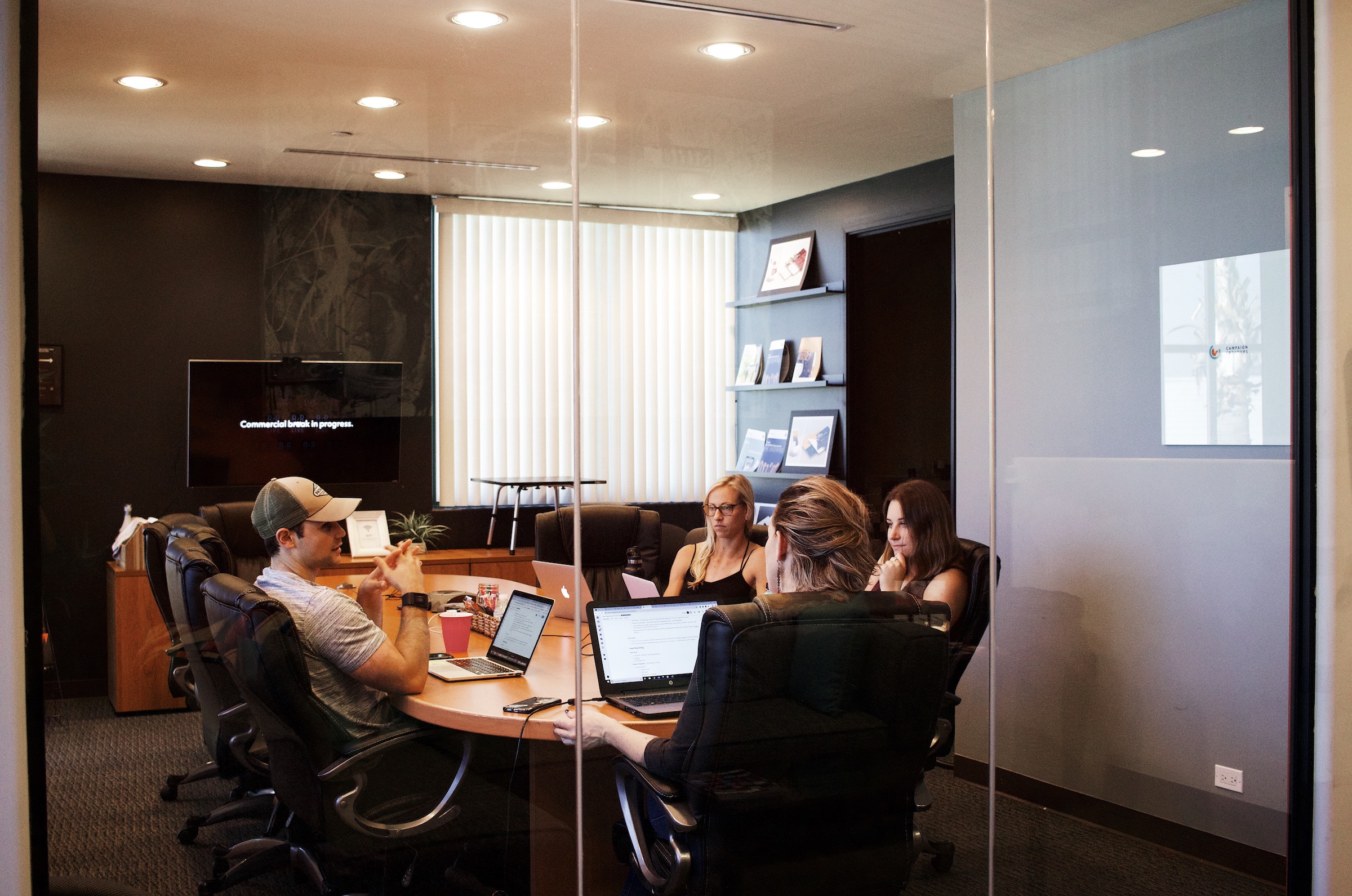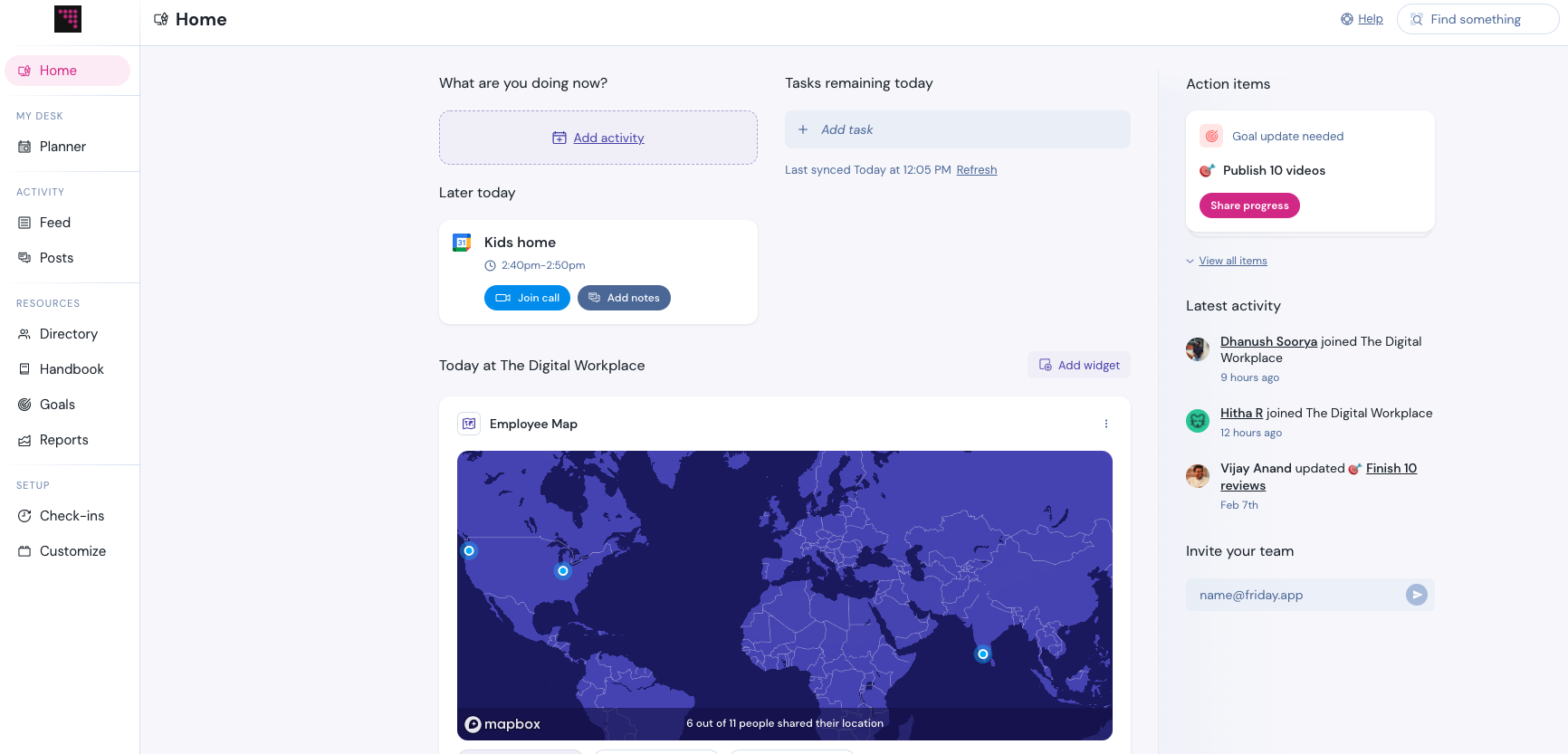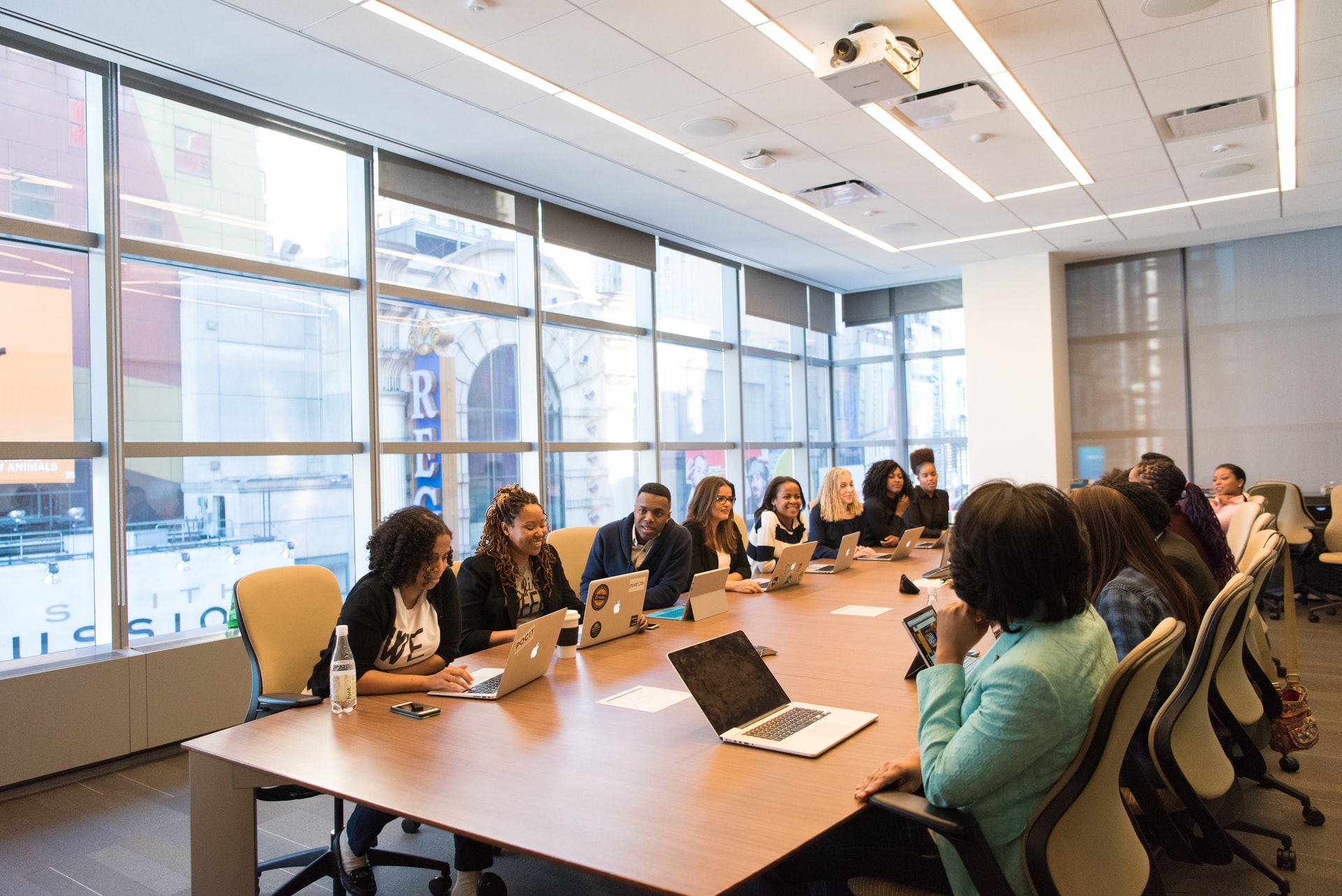We are lucky to be experiencing the 4th industrial revolution where technology, digitization, and artificial intelligence are taking us to new heights every day. What is truly fascinating about any breakthrough, scientific or technological, is it typically already existed and the breakthrough is truly learning how to discover it or use it.
Take meetings for example. Technology has made meetings much easier through clearer phone connections, video feeds to connect remotely, and wireless facilitation tools. But what hasn’t changed is that we still need meetings. These technologies do not remove the need to sit together with coffee mugs in hand similarly to every generation before us.
The purpose of a meeting is to bring work in that cannot be achieved on our own and work together to fix, assign, alleviate, or resolve something. It is a necessary cog to transport work through a process or many processes.
But how has technology changed meetings for the better? Armed with so many meeting tools, how can we take meetings to the next level? How do we maximize our time? What does the future of meetings look like? Without jumping into a car with Marty to the future, let’s explore these possibilities and dream of what’s next to make meetings more focused and effective and what we can do presently to achieve a similarly positive result.
Remote connectivity
We should all be impressed by the fact we can pick up a cell phone and call someone on the other side of the planet. While we have been able to do that for a while, many still can reflect on a day when that was not possible for them personally. Though connections are clearer, phones and video software are still dependent on the energy and connectivity of servers and other environment factors that can lead to delayed start times, difficulty hearing, and the physical divide of buildings, states, and continents.
We should anticipate our remote toolsets to improve by leaps and bounds with greater use of sensors, virtual reality, and other advances that make walking into a room the trigger that makes it even easier to start and run meetings as well as providing a more engaging environment.
HOW THIS WILL HELP MEETINGS: Less effort to start and run a meeting so all participants can walk right into a room, physical or virtual, and get right to the work at hand.
UNTIL THAT DAY: Do your best to be on time, prep the meeting room, and turn on your cameras to bring you and your team as physically together as possible to accomplish great things.
Voice recording, transcription, and augmentation
We all want to stop writing and typing so we continue to pray to the voice technology gods to hurry up and make voice recording even better. It has come a long way but everyone recognizes it is still far from perfect or we would all be using it.
As we watch voice recording improve to better capture dialect, reduce background noise, and exclude the need for 3rd party accuracy reviews, we can expect to invite Siri, Alexa, and other friends to our meetings to be hands free.
HOW THIS WILL HELP MEETINGS: Letting technology capture the meeting notes and task assignments will create a hands-free environment where each person can truly focus their brain power on solving problems rather than worrying about human mistakes and missing documentation.
UNTIL THAT DAY: Keep capturing the meeting. Anything that is brought to the table should be documented and considered a valuable asset to the company including goals, decisions, actions, and key take-aways.
Artificial intelligence and automation
AI is cool, scary, unlimited, and powerful, and everyone is still trying to decide when and how to use it. Thankfully we see tech giants jumping in head first to explore and implement machine learning and sharing tools (at a price) for the rest of us to use as well. Workflows and automation have been around for a long time but they take effort to set up, activate, and monitor.
In addition, everything we do evolves and changes so it becomes necessary to also change how we automate process and information as well. While AI does some if the work for us, it doesn’t yet do all of it. Someone has to invent and build the right data models in support of the desired result. Humans lack trust and check the work. And many of us don’t yet know what to build or even how to ask for it. And then there is the cost of building and implementation.
HOW THIS WILL HELP MEETINGS: Advances in AI and automation capability can eliminate the critical busy work meetings create so more facilitators and managers could focus on the people and the problem the meeting is for. If we have data faster to make business-critical decisions, we are either using that data to make those decisions or, even better, the decisions, actions, and notifications tied to those changes are made for us. In addition, AI will help us better plan our time to avoid being overbooked, commuter delays, room availability, and automatically shift us to the right time and location.
UNTIL THAT DAY: Set reminders and block time to plan and prepare for meetings. Share agendas with guests so they too have time to prepare. Take advantage of any automation you have today to schedule ahead, communicate, and share information.
Bringing meetings to the future
Technology is changing nearly every part of work, but its promises are always farther out in the future. As business leaders, we can use this in-between time to evaluate what we really want from technology, and what we can do now. Meetings will always have a place in business, but we can start to eliminate their inefficiencies today and scale those efforts tomorrow.
Heather Hansson is the Director of Product at Docket, a SaaS meeting intelligence platform that enables and enhances every stage of the meeting by creating better meeting habits. She is passionate about people, process, and personalization so that individuals and teams can get more done and stay aligned every step of the way.
We are lucky to be experiencing the 4th industrial revolution where technology, digitization, and artificial intelligence are taking us to new heights every day. What is truly fascinating about any breakthrough, scientific or technological, is it typically already existed and the breakthrough is truly learning how to discover it or use it.
Take meetings for example. Technology has made meetings much easier through clearer phone connections, video feeds to connect remotely, and wireless facilitation tools. But what hasn’t changed is that we still need meetings. These technologies do not remove the need to sit together with coffee mugs in hand similarly to every generation before us.
The purpose of a meeting is to bring work in that cannot be achieved on our own and work together to fix, assign, alleviate, or resolve something. It is a necessary cog to transport work through a process or many processes.
But how has technology changed meetings for the better? Armed with so many meeting tools, how can we take meetings to the next level? How do we maximize our time? What does the future of meetings look like? Without jumping into a car with Marty to the future, let’s explore these possibilities and dream of what’s next to make meetings more focused and effective and what we can do presently to achieve a similarly positive result.
Remote connectivity
We should all be impressed by the fact we can pick up a cell phone and call someone on the other side of the planet. While we have been able to do that for a while, many still can reflect on a day when that was not possible for them personally. Though connections are clearer, phones and video software are still dependent on the energy and connectivity of servers and other environment factors that can lead to delayed start times, difficulty hearing, and the physical divide of buildings, states, and continents.
We should anticipate our remote toolsets to improve by leaps and bounds with greater use of sensors, virtual reality, and other advances that make walking into a room the trigger that makes it even easier to start and run meetings as well as providing a more engaging environment.
HOW THIS WILL HELP MEETINGS: Less effort to start and run a meeting so all participants can walk right into a room, physical or virtual, and get right to the work at hand.
UNTIL THAT DAY: Do your best to be on time, prep the meeting room, and turn on your cameras to bring you and your team as physically together as possible to accomplish great things.
Voice recording, transcription, and augmentation
We all want to stop writing and typing so we continue to pray to the voice technology gods to hurry up and make voice recording even better. It has come a long way but everyone recognizes it is still far from perfect or we would all be using it.
As we watch voice recording improve to better capture dialect, reduce background noise, and exclude the need for 3rd party accuracy reviews, we can expect to invite Siri, Alexa, and other friends to our meetings to be hands free.
HOW THIS WILL HELP MEETINGS: Letting technology capture the meeting notes and task assignments will create a hands-free environment where each person can truly focus their brain power on solving problems rather than worrying about human mistakes and missing documentation.
UNTIL THAT DAY: Keep capturing the meeting. Anything that is brought to the table should be documented and considered a valuable asset to the company including goals, decisions, actions, and key take-aways.
Artificial intelligence and automation
AI is cool, scary, unlimited, and powerful, and everyone is still trying to decide when and how to use it. Thankfully we see tech giants jumping in head first to explore and implement machine learning and sharing tools (at a price) for the rest of us to use as well. Workflows and automation have been around for a long time but they take effort to set up, activate, and monitor.
In addition, everything we do evolves and changes so it becomes necessary to also change how we automate process and information as well. While AI does some if the work for us, it doesn’t yet do all of it. Someone has to invent and build the right data models in support of the desired result. Humans lack trust and check the work. And many of us don’t yet know what to build or even how to ask for it. And then there is the cost of building and implementation.
HOW THIS WILL HELP MEETINGS: Advances in AI and automation capability can eliminate the critical busy work meetings create so more facilitators and managers could focus on the people and the problem the meeting is for. If we have data faster to make business-critical decisions, we are either using that data to make those decisions or, even better, the decisions, actions, and notifications tied to those changes are made for us. In addition, AI will help us better plan our time to avoid being overbooked, commuter delays, room availability, and automatically shift us to the right time and location.
UNTIL THAT DAY: Set reminders and block time to plan and prepare for meetings. Share agendas with guests so they too have time to prepare. Take advantage of any automation you have today to schedule ahead, communicate, and share information.
Bringing meetings to the future
Technology is changing nearly every part of work, but its promises are always farther out in the future. As business leaders, we can use this in-between time to evaluate what we really want from technology, and what we can do now. Meetings will always have a place in business, but we can start to eliminate their inefficiencies today and scale those efforts tomorrow.
Heather Hansson is the Director of Product at Docket, a SaaS meeting intelligence platform that enables and enhances every stage of the meeting by creating better meeting habits. She is passionate about people, process, and personalization so that individuals and teams can get more done and stay aligned every step of the way.
)
)
)







